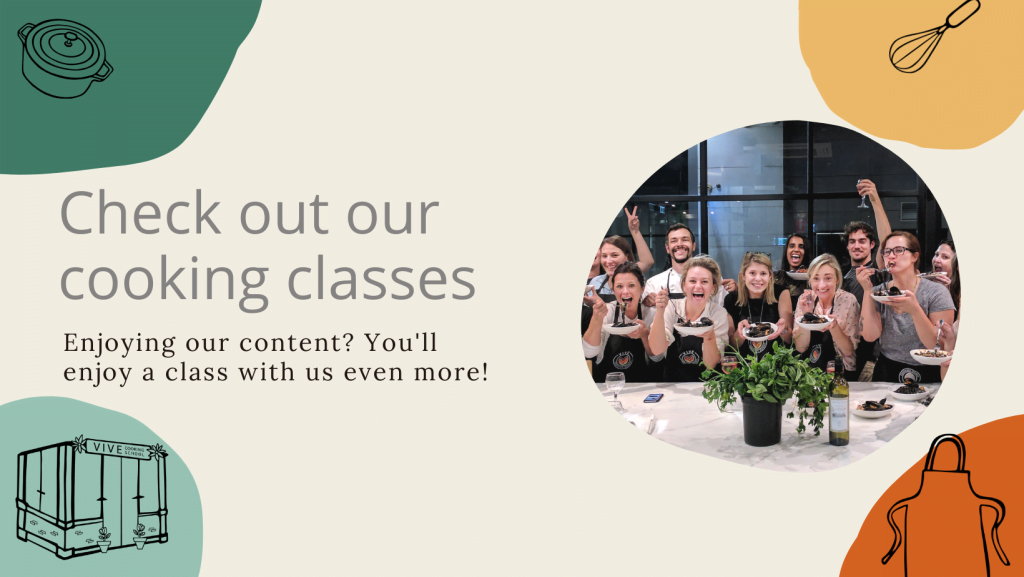Pair 20 years of steel manufacturing experience with 20 years of cooking experience, and what do you get? Exquisite Japanese knives made by our favourite local knife makers, sharpeners & restorers – Koi Knives.
Here is a quote from Jean-Luc about the beginnings of the Koi Knives + VIVE Cooking School relationship:
“When Ramon reached out to VIVE, I was curious and impressed by the way they married Japanese Steel with Australian Wood and how gorgeous the knives looked.
We could not be happier that our students get exposed to Koi Knives and get to support local artisans, while enjoying the performance of quality Japanese Steel: The best of both worlds!”
– Jean-Luc Tan, Founder, VIVE Cooking School.
In this blog, we want to introduce you to a couple of legends who are passionate about designing high quality knives that create more joy in the kitchen. We interviewed Koi Knives’ Co-Founder, Ramon Elzinga, to learn more about the inspiration behind Koi Knives and the work that goes into making some of the best knives on the market.
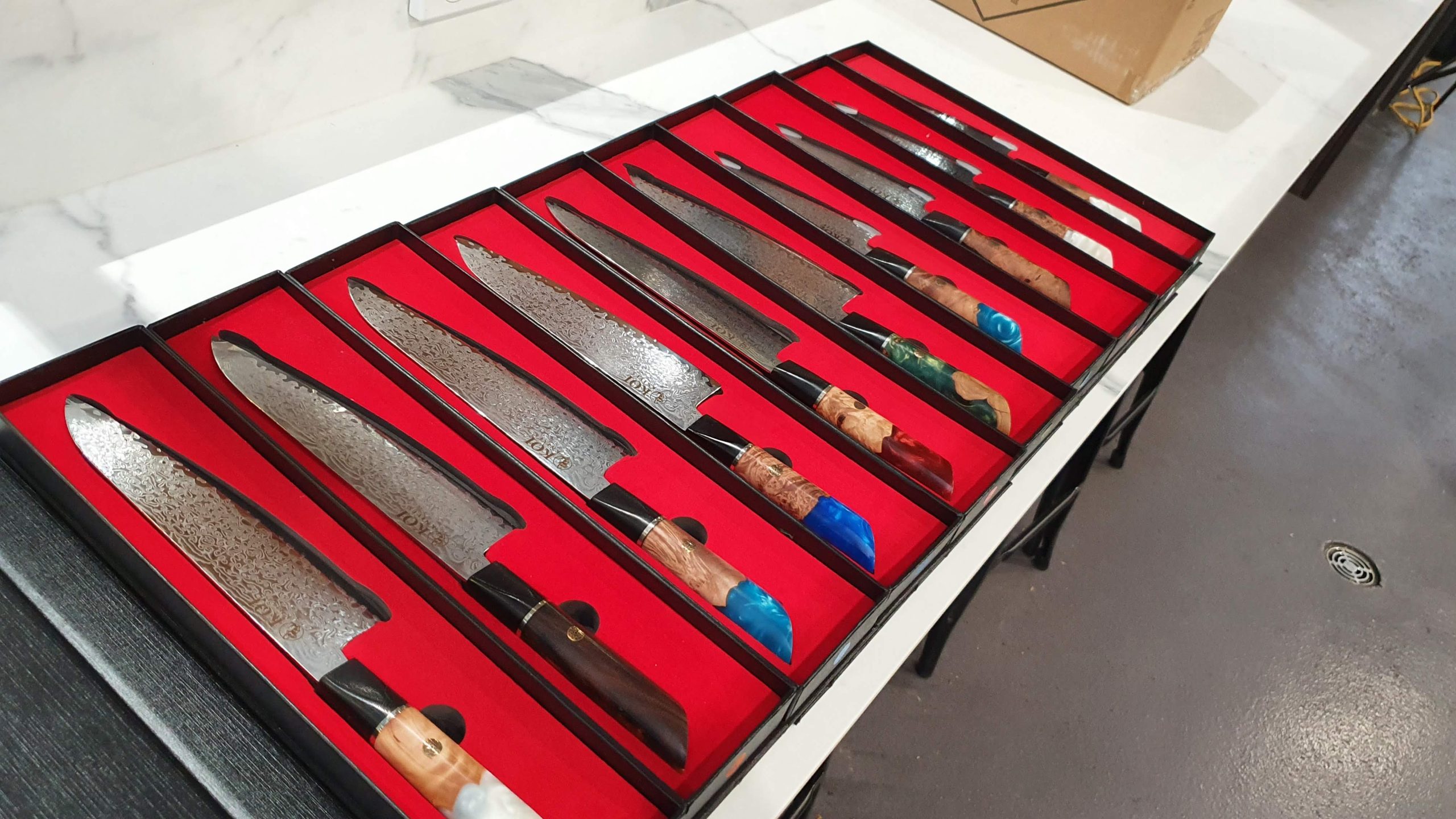
What is the inspiration behind Koi Knives?
Shannon and I started Koi – our inspiration (perhaps OCD is more appropriate) came from our parents. Shannon’s father is a blacksmith and Shannon’s been playing with steel since he was a kid (long before legally allowed I think). A few decades later and he’s still in the shed playing with steel (it started 40 years ago and remains our primary location for the work we do (we now have a shop also). That’s where our steel inspiration comes from. In terms of art and design and connection with Japan that comes from my parents who met in Japan. My mother met my father in Kyoto where my mother studied Japanese silk art (her and my dad were also in a cool Japanese film). So what we do was inspired by our parents (as parents we hope we now offer some inspiration to our kids!).
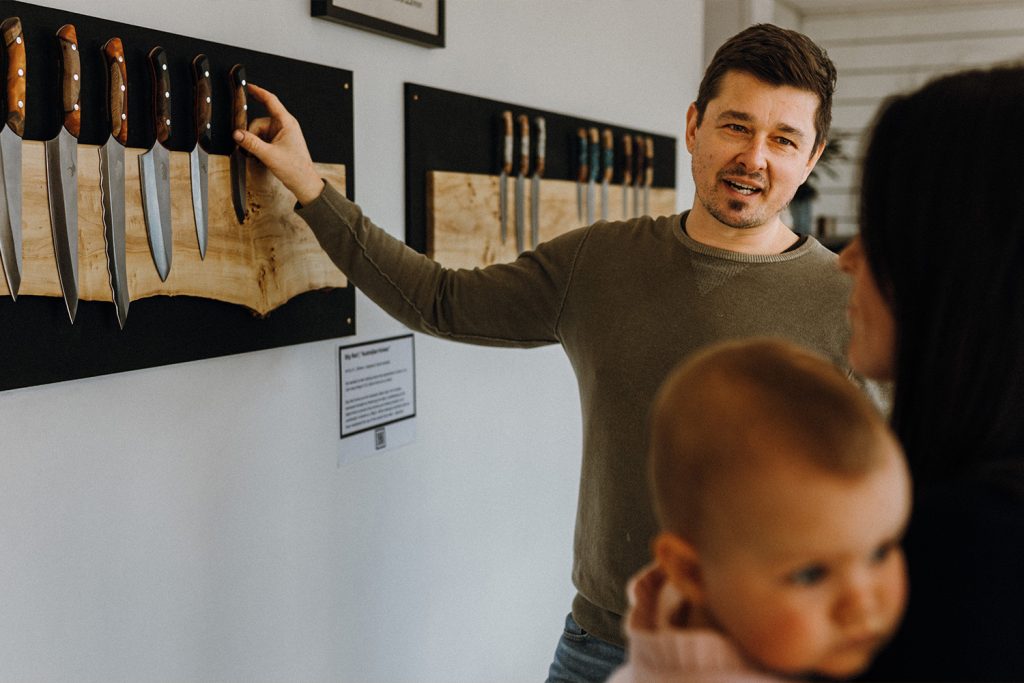
What makes Koi Knives unique?
Probably the fusion of Japanese Steel with Australian Wood. Japanese steel is the best in the world but it took us many years to make handles that matched that standard. It turns out the wood (on our handles) is basically a reincarnation of wood. In our case, roots of wine vines near us in McLaren Vale, almonds roots when they cease to yield almonds (Mt Compass) and basically whatever wood that looks interesting but would otherwise be burnt. Using these handles and fusing them with resin means we can never repeat a knife. They are all different as they come from nature. For better or worse nature is not something we can control so every knife we ever make will look and feel different.
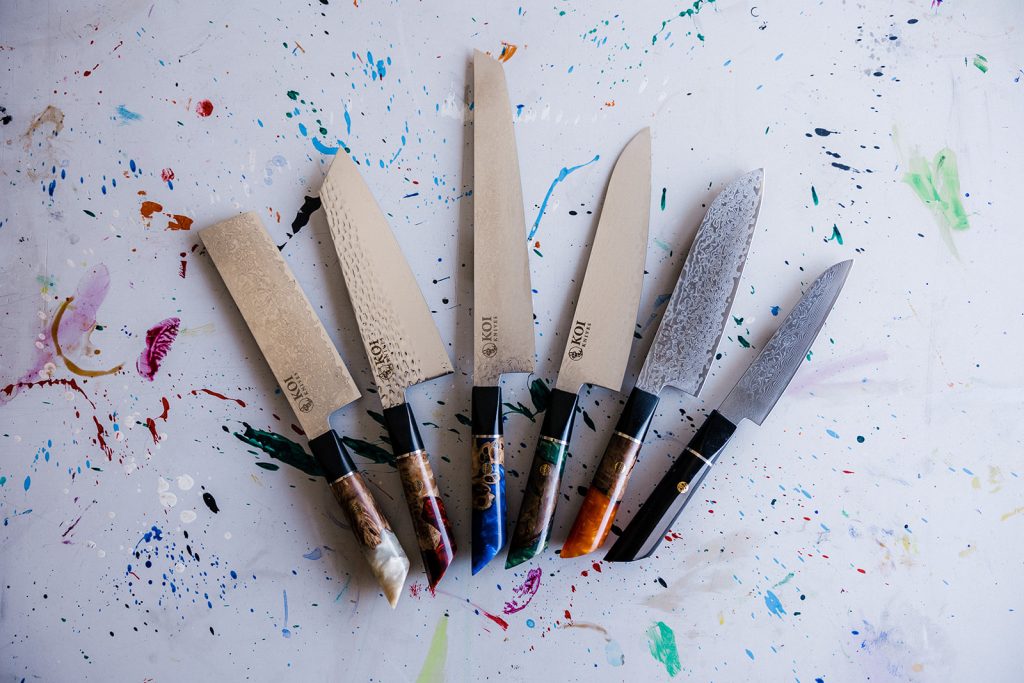
How are the knives made?
We design what we are in the mood to design or what customers ask for (aka demand). We then stuff it up about 5-6 times before we finally get settled (then we stuff it up a few more times). When we are happy (sort of as we are never happy) we then do small batches using whatever wood that can be found nearby and deliver them to whoever wants them. Then we start again.
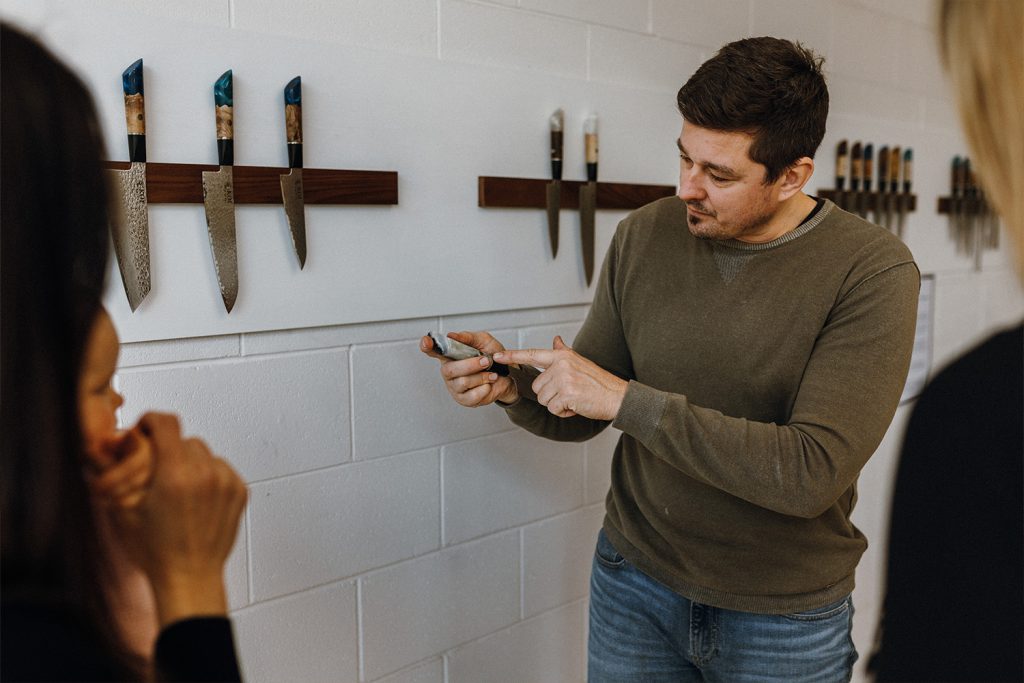
What makes a good quality knife?
Very good question. The question is really about balance that suits you. We like clean steel (many are dirty, hence why we use Japanese steel) made with around 1% Carbon (hard but not corrosive), 12% Chromium (technically stainless) and a few other bits and bobs to make it what it is. We buy this from Takefu and Aishi in Japan. Part 2 is the handle which is really what you like the look and feel of. We like Australian wood, shaped the way we shape it, with some resin (also used on surfboards) that brings some colour to the kitchen.
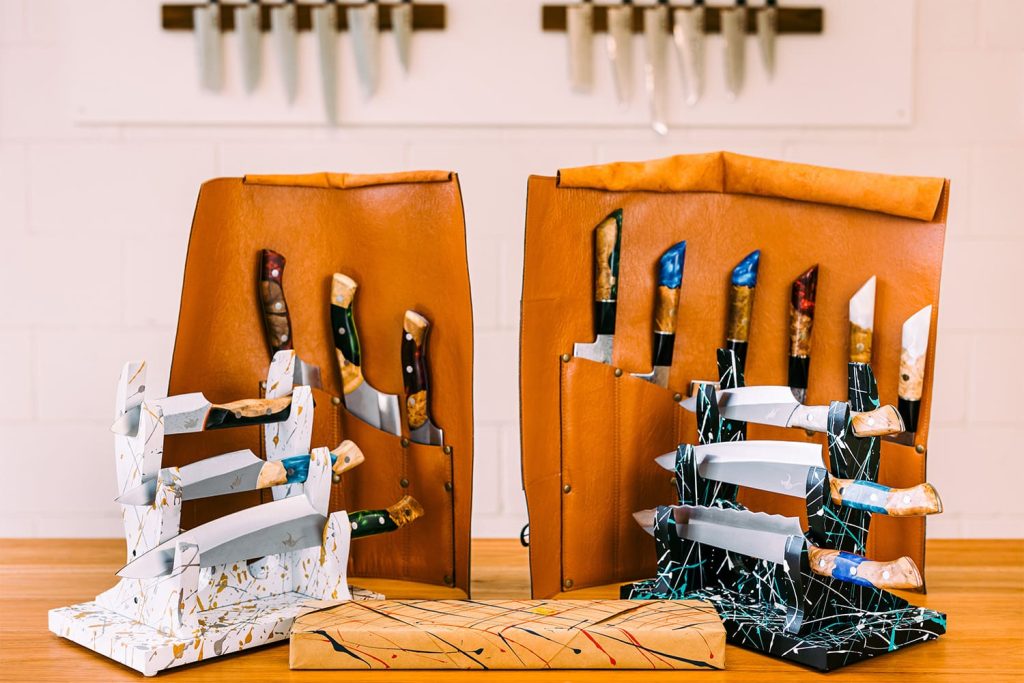
What are your tips for maintaining a knife set?
Visit Joao (our master sharpener) if you’re in SA. If you’re not in SA watch his videos (https://www.koiknives.com/blogs/knife-sharpening).
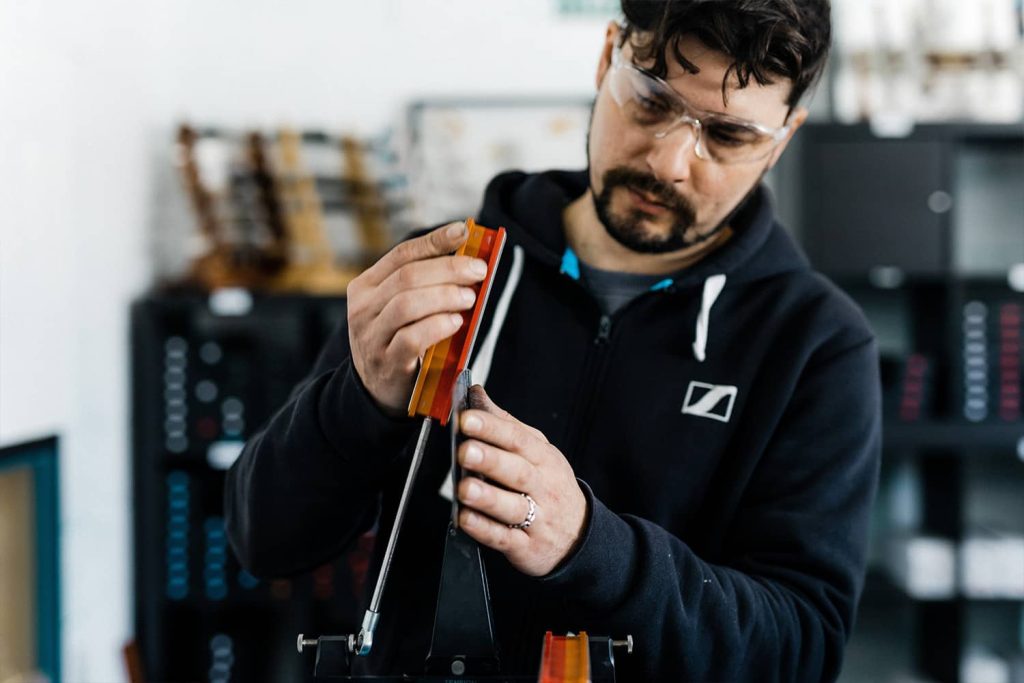
We are so grateful to have had the opportunity to chat with Ramon to gain a little more insight into Koi Knives. If you’re looking for unique, premium and beautifully designed knives, make sure to check out Koi Knives by clicking the button below. Also, give them a follow on Instagram!
Click here to view their websiteIf you’re reading this blog, then you’re probably interested in Japanese cooking and culture. Check out our Japanese cooking class in Sydney, where you will learn how to make some traditional dishes like gyoza and karaage chicken.
